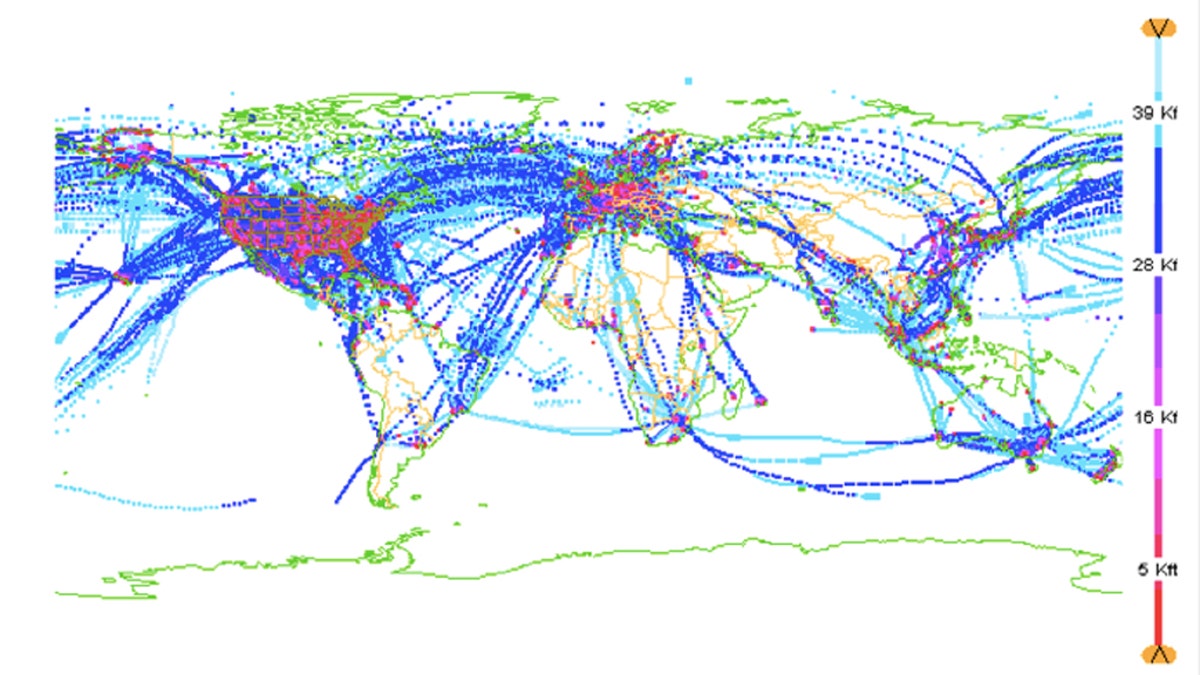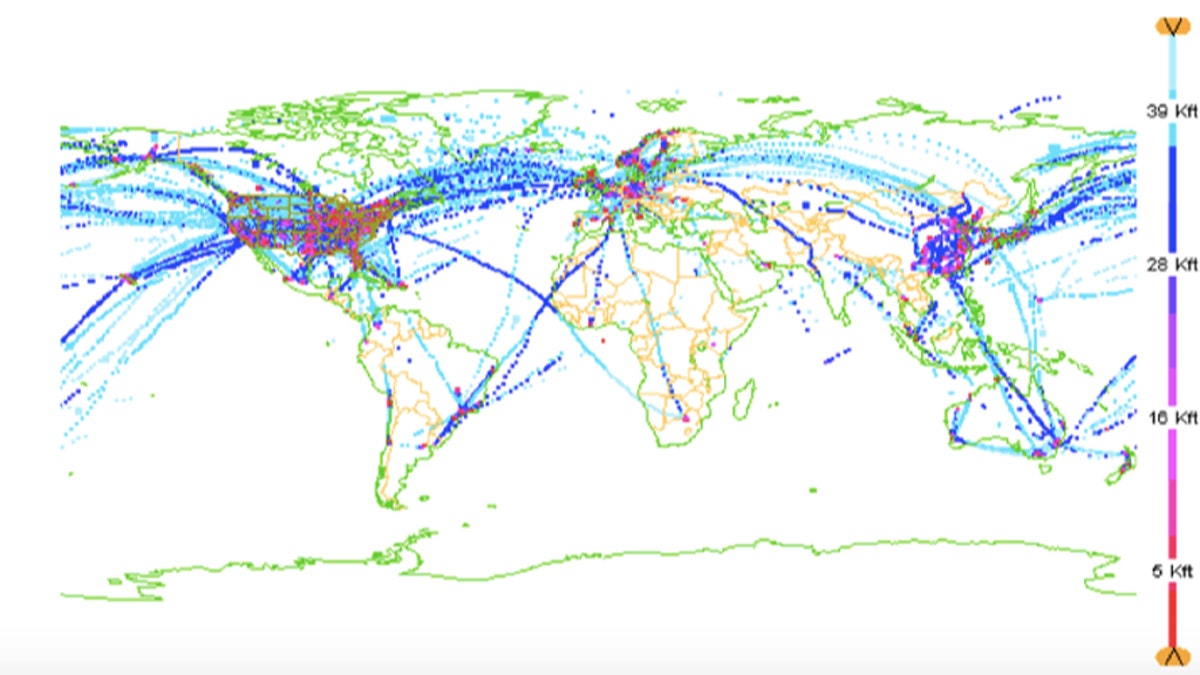How will COVID-19 fare in the summer weather?
A new study claims coronavirus can survive exposure to high temperatures; Dr. Marc Siegel reacts.
Get all the latest news on coronavirus and more delivered daily to your inbox. Sign up here.
The coronavirus pandemic that has caused a freefall in air travel around the globe is also having a noticeable impact on the "quantity and quality" of weather observations and forecasts worldwide, according to a leading group.
The World Meteorological Organization (WMO) said last week that the number of meteorological measurements taken by aircraft has "plummeted" by an average of 75 to 80 percent compared to normal as COVID-19 has spread globally.
"As we approach the Atlantic hurricane season, the COVID-19 pandemic poses an additional challenge and may exacerbate multi-hazard risks at a single country level," WMO Secretary-General Petteri Taalas said in a statement. "Therefore it is essential that governments pay attention to their national early warning and weather observing capacities."
CORONAVIRUS MAY MAKE WEATHER FORECASTS LESS ACCURATE AS FLIGHTS CANCELED ACROSS THE WORLD
While the group said that measurements from aircraft have dropped up to 80 percent compared to normal, notable regional variations were apparent.

Aircraft-based operations across the globe in a 24-hour period as seen on Jan, 31, 2020. Meteorological measurements taken from aircraft have plummeted by an average 75 to 80 percent compared to normal due to the coronavirus pandemic, according to the World Meteorological Organization (WMO). (NOAA/ESRL/GSD via WMO)
Data losses closer to 90 percent were reported in the tropics and in the Southern Hemisphere, especially in places such as Africa in addition to parts of Central and South America, where the WMO noted many weather stations rely on manual operation rather than automatic.

Aircraft-based operations across the globe in a 24-hour period as seen on May 4, 2020. Meteorological measurements taken from aircraft have plummeted by an average of 75 to 80 percent compared to normal due to the coronavirus pandemic, according to the World Meteorological Organization (WMO). (NOAA/ESRL/GSD via WMO)
One of the main sources of aircraft-based weather observations to use in forecasts is the Aircraft Meteorological Data Relay Program (AMDAR) by the WMO. The WMO is an arm of the United Nations that coordinates a global observing system for 193 member nations.
The AMDAR system uses sensors and communications systems from existing aircraft carrying travelers to collect, format, and transmit meteorological data from forecast winds at cruising altitudes. The information arrives at ground stations by either satellite or radio links.
But as coronavirus spread through Europe and travel restrictions were enacted in March, the amount of data from aircraft being used to go into weather models plummeted.

Imagery showing the density in aircraft at different altitudes in Europe on March 2, 2020. Red indicates low altitudes. (Stewart Taylor/EUMETNET)
The European Center for Medium-Range Weather Forecasting said at the time that aircraft reports are provided by airlines in the U.S., because of the "particularly dense coverage" of aircraft in the skies of America. The European center noted that between March 3 and 23, aircraft-generated weather reports across Europe dropped by 65 percent, while there was also a 42 percent drop globally.
DUST STORM IN ARGENTINA THAT CARRIED PARTICLES OVER 80 MILES SPOTTED FROM SPACE
Forecasters in Europe noted that a small proportion of aircraft reports come from cargo flights, which are less affected by COVID-19 than passenger flights.

Imagery showing the density in aircraft at different altitudes in Europe on March 23, 2020. Red indicates low altitudes. A noted reduction in flights can be seen over Italy. (Stewart Taylor/EUMETNET)
The WMO said Thursday that large parts of the observing system, including satellite components and many ground-based observing networks, are automated to a degree. But there is concern that if the pandemic drags on that they will miss out on critical repair, maintenance, and supply work.
In response to the drop in data, the group noted that some countries are launching extra radiosondes, which are flown on weather balloons, to partly mitigate the loss of aircraft observations. The practice is being done particularly in Europe.
"Radiosondes are flown on weather balloons and transmit measurements critical meteorological variables back to the ground during their flight from the surface up to altitudes of 20 to 30 kilometers (12 to 18 miles)," the WMO noted.
The WMO currently uses 30 meteorological satellites and 200 research satellites, which provide continuous, highly-automated observations.
CLICK HERE FOR MORE WEATHER COVERAGE FROM FOX NEWS
In addition to the satellites, there are also more than 10,000 completely automated and unmanned surface weather stations on Earth.
As major carriers also cut flights in the U.S. due to the pandemic, American forecast counterparts such as the National Oceanic and Atmospheric Administration, which runs the U.S. forecast model known as the GFS, also noted impacts from fewer planes in the sky.
CLICK HERE FOR THE FOX NEWS APP
“We are anticipating the substantial reduction in the availability of US AMDAR data to continue over the coming weeks, likely to generate some measure of impact on the output of our numerical weather prediction systems,” NOAA's Christopher Hill said in an ECMWF news release in March.



